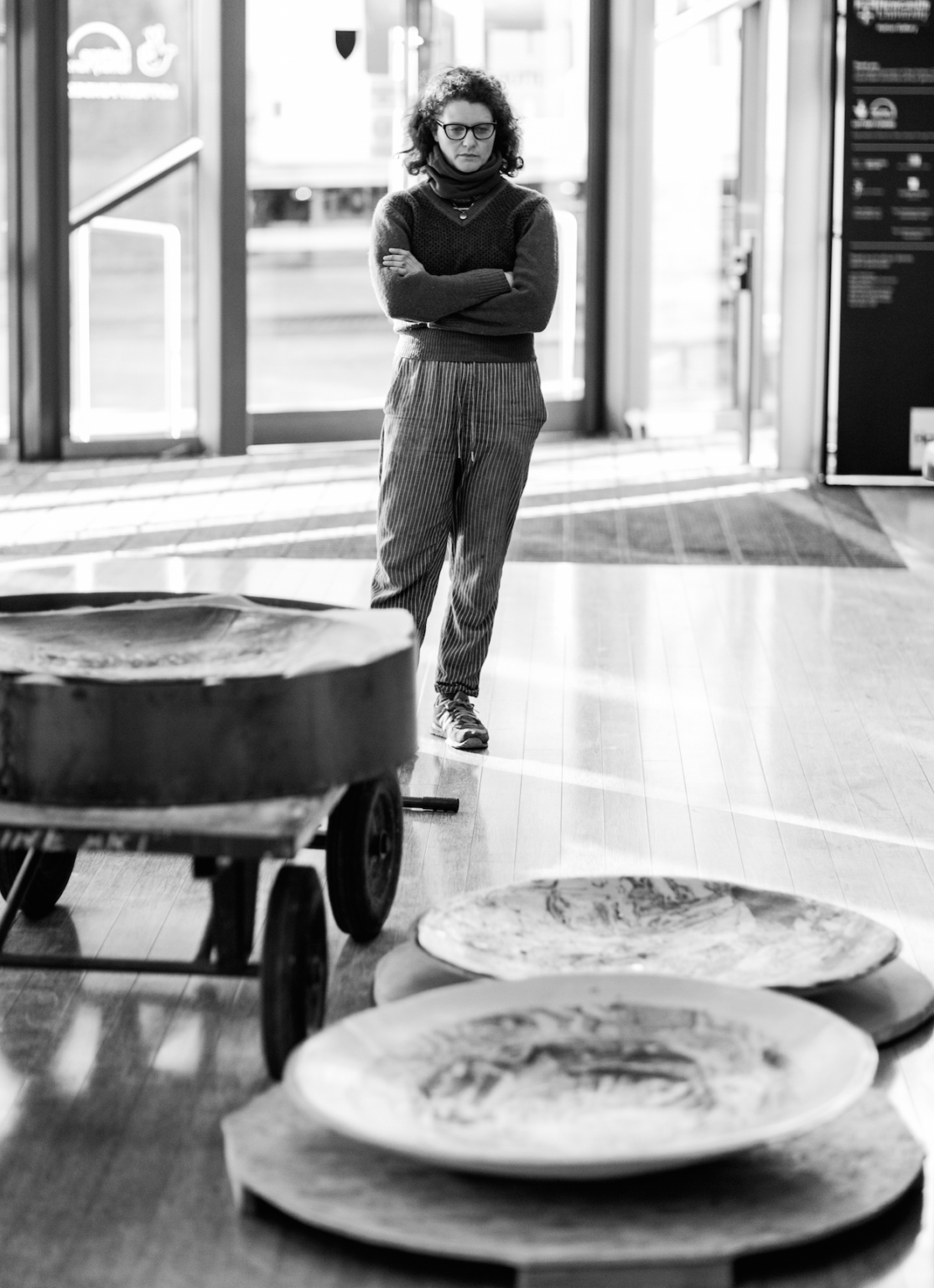Salt+Shaw is the collaborative book-making practice of Sheffield-based artists Paul Salt and Susan Shaw, who have been producing book works together for more than 15 years.
At the recent 21st International Contemporary Artists’ Book Fair in Leeds, they launched Ocean Bestiary, a unique book of strange and miraculous Medieval-inspired sea creatures that features a concertina construction, letterpress text, acrylic paint, gold foil, whale bone and a leather inlay.
Made as unique pieces or small editions, Salt+Shaw’s books are a response to place, environment and discoveries made in the natural or urban landscape. The pair are often to be found on location; recording, collecting, drawing, photographing and writing in response to the places they have set out to discover, from forest to city to seashore.
Histories are alluded to through collections of specimens of natural origin – such as water and earth from rivers, marshes and mountains – or from objects discovered, for example clay pipes from a walk along the Thames shoreline, horse hair plucked from a barbed wire fence in Iceland, and scissors from an abandoned Sheffield factory.
As they explain: “These raw materials gradually reveal their content, narrative and structure. The book is an ideal format for our work, enabling us to combine individual interests and ways of working.
“The process of construction joins the physicality of making with the creative development of the structure and its inextricably linked contents. We make books together, either led by one of us and underpinned by mutual support, or co-produced as a joint piece through a process of negotiation, discussion and sheer bloody mindedness.”
Mill, for example, is the result of their exploration of Cromford Mill in Derbyshire, the first water-powered, cotton-spinning mill developed by Richard Arkwright in 1771. Solid, plaster cast blocks are held softly between calico pages containing hidden texts, bound in recycled wooden library shelf covers that indicate there is history to be found within.
Each book work acts as a point of discovery, giving signals or clues to the content’s original source or function. The industry of the city’s river in Sheffield, the uses of domestic space, or a found piece of whalebone are all equally investigated and formed into poetic, visual narratives.
Images:
1. Salt+Shaw, Ocean Bestiary, a book of strange and miraculous Medieval-inspired sea creatures. Concertina construction, using letterpress text, acrylic paint, gold foil, whale bone and leather inlay. Unique book, 2017. Photo: Susan Shaw
2. Salt+Shaw, Slice, boxed, loose sheets and bottled earth. Material taken from the Mhoine Mhor in Scotland, the largest raised bog in Britain and also the site of Dunadd. Edition of 10, 2003. Photo: Paul Salt
3. Salt+Shaw, Raft, a wooden book with brass hinges, print of a disaster taken from a 1967 plate and copies of covers from the Sheffield Star [10 year intervals]. Edition of 3, 2009. Photo: Paul Salt
4. Salt+Shaw, Mill, plaster, leather, recycled wooden library shelves and calico. A journey around Cromford Mill, Derbyshire. Fabric pages contain hidden text. Edition of 24, 2006. Photo: Susan Shaw
5. Salt+Shaw, These Waters Rolling From Mountain Streams, hardback plastic book, with impressed drawings and grated samples from spring water bottles retrieved from seven British rivers. Open edition, 2008. Photo: Susan Shaw
For more in this series, use the Artists’ Books series tag
More on a-n.co.uk:

Women’s Strike: “So much cultural work, beyond being an artist, is women’s work”

A Q&A with… Serena Korda, artist working with ceramics and sound

The art of incarceration: representation and rehabilitation in UK prisons






